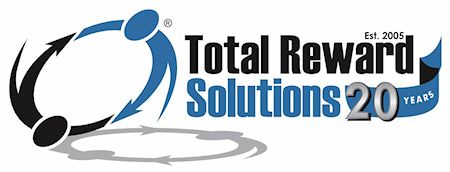April 18, 2015
The salesperson has a unique place in the organization. If the salesperson does not feel motivated to perform at a high level, revenues falter. And if sales performance remains at a low level for very long, the organization could fail, leaving dozens or hundreds or even thousands of employees out of work. So a lot rides on the salesperson feeling satisfied and well-compensated. Of course, because the salesperson’s role in the organization is unique, salesperson compensation does not – and usually should not – fit neatly into a compensation structure that might be appropriate for the rest of the organization.
So how should your company create a fair and attractive compensation program designed to keep top salespersons on your team? Let’s take a closer look:
Compensation as Motivation
Perhaps more than any other job in the organization, the salesperson’s role depends on bottom-line results: make quota, attract customers, increase revenue. Because those goals are so vital to the success of the organization, it’s not enough for the salesperson to be rewarded for making sales; the salesperson must also feel motivated and appreciated in order to excel. Because the success of the organization hinges so much on the performance of the salesperson, a compensation system with motivating rewards can be essential. To design such a system, it is important to first understand the unique aspects of the salesperson’s job.
Understanding the Salesperson’s Job
Yes, the salesperson’s duties are one-of-a-kind in the organization. Because of this, it is easy for the role of the salesperson to be misunderstood, underappreciated and incorrectly compensated. To get a handle on the most appropriate salesperson compensation system, it is critical to be able to answer these questions:
- How are sales team jobs defined in your organization?
- What role do these jobs play in the overall sales process?
- What types of customers do salespersons interact with? What skill sets are required to perform well with these customers?
- What is the job’s primary sales strategy?
- Do salespersons get help from others in the organization, or do they sell on their own?
- What are the products or services being sold?
- Who in the organization is eligible for inclusion in the salesperson’s unique compensation plans?
Some of these questions might seem odd when considering the design of an internal compensation system, but identifying the salesperson’s operating environment and challenges can be the first crucial step toward appropriate compensation design.
Establishing Pay Level Targets
It can be more challenging to establish pay level targets for salespersons because their job is so closely aligned with quantifiable performance and the achievement of bottom-line goals. Baseline pay for salespersons is usually accompanied by an incentive- or performance-based component such as commissions for sales. While many, if not most, non-executive jobs in the organization can be assigned a pay level range with increases compared to prior year compensation, the salesperson’s compensation program can get more complicated.
To adequately assign pay level targets, you should consider these and other key factors:
- The organization’s sales compensation philosophy
- Good market data about benchmarked jobs in the industry, geographic area, etc.
- Pay structure based on competitive data
- Possible levels of base vs. incentive pay
- The relationship between pay and performance expectations
- Whether the salesperson’s activities can be classified more as “hunter” or “farmer”
- The total target cash allocated to compensate members of the sales department
- Cost of sales compared to revenue
Bottom Line:
The salesperson is an indispensable contributor to the success of most corporations. Because their role, working environment and expectations are different from other employees, it is vital to view their compensation through a different lens.
With that in mind, it is important to know that a well-designed compensation plan for salespersons can mean the difference between success and failure, not just for the salesperson but for the entire organization. And with so much riding on this program, it is important to consider not only the factors I’ve described here, but others, too, including pay mix and upside potential, components and weightings, the mechanics of a salesperson compensation program, how to implement and communicate the plan, and more. I’ll cover those areas in future articles, but if you want to learn more now, or if you need immediate help getting your salesperson compensation program on track, contact Total Reward Solutions today at 317.589.8529.
